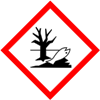 |
King of Chemicals Manufacturers |
Specifications, Properties, Uses, SDS of Macrogol Cetostearyl Ether BP Ph Eur Grade Manufacturer Supplier Exporter Wholesale & Small Packs, CAS Number 68439-49-6. |
|
| King of Chemicals has several associated companies having accreditations like cGMP, GLP - FDA Approved Good Manufacturing Practice and Good Laboratory Practice of WHO standard, ISO-9001, ISO-14001, ISO/IEC 17025, ISO ISO-45000, HACCP, FSSC 220000, FSSAI, "REACH" Registered, Kosher & Halal Certified. e-CTD and DMF support can be made available if needed. We offer USP NF BP Ph Eur EP IP JP Analytical Reagent FCC Food Grade Chemicals & Nutraceuticals. | |
        |
|
Muby Chem Pvt. Ltd. is a several decades old group of companies, engaged in manufacturing, supplying, distributing, wholesale supplies of Macrogol Cetostearyl Ether BP Ph Eur Grade for actual users, including retail or small pack supplies for research and development work.
We supply fine and speciality chemicals, pharmaceutical excipients, mineral fortifiers in chemically pure, analytical reagent grade, IP BP USP Ph Eur EP JP and other pharmaceutical grade monograph including FCC Food grade chemicals and Nutraceuticals at best prices. We and/or our associated units have all the facilities to supply as per cGMP standard observing good manufacturing practice and good laboratory practice. We can assure low microbial count and also offer a test certificate for the same. We maintain warehouses across USA, India, and UAE. Our group exports to USA, Canada, Mexico, Argentina, Brazil, Chile, Korea, Malaysia, Thailand, Indonesia, Europe, and several other parts of the world. We supply in wholesale container loads to small pack of few grams. Solid products may be specified for it size and shape as desired by the buyer.
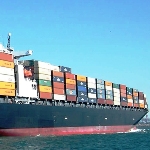
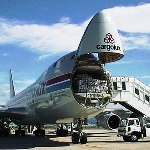
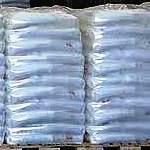
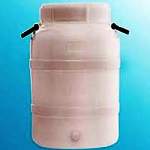
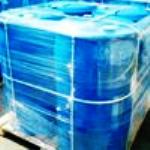
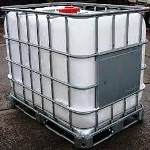
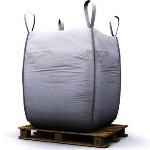
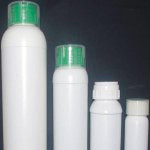
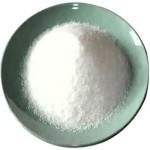
Macrogol Cetostearyl Ether CAS Number 68439-49-6
For Properties Specifications Uses of Macrogol Cetostearyl Ether Click Properties, Specifications, Uses, Price, Process of Macrogol Cetostearyl Ether Manufacturer.
For For SDS MSDS Sheet of Macrogol Cetostearyl Ether Click SDS Safety Data Sheet MSDS Sheet of Macrogol Cetostearyl Ether Manufacturer.
The Properties, Specifications, Monograph and Uses of Macrogol Cetostearyl Ether:
Macrogol Cetostearyl Ether BP Ph Eur Grade Specifications:
Action and use: Non-ionic surfactant.
DEFINITION
Mixture of ethers of mixed macrogols with linear fatty alcohols, mainly cetostearyl alcohol. It may contain some free macrogols and it contains various amounts of free cetostearyl alcohol. The number of moles of ethylene oxide reacted per mole of cetostearyl alcohol is 2 to 33 (nominal value).
CHARACTERS
Appearance: White or yellowish-white, waxy, unctuous mass, pellets, microbeads or flakes.
Solubility:
- macrogol cetostearyl ether with low numbers of moles of ethylene oxide reacted per mole: practically insoluble in water, soluble in ethanol (96 per cent) and in methylene chloride;
- macrogol cetostearyl ether with higher numbers of moles of ethylene oxide reacted per mole: dispersible or soluble in water, soluble in ethanol (96 per cent) and in methylene chloride.
It solidifies at 32C to 52C.
IDENTIFICATION
A. Hydroxyl value. To pass the test.
B. Iodine value. To pass the test.
C. Saponification value. To pass the test.
D. Thin-layer chromatography. To pass the test.
E. Dissolve or disperse 0.1 g in 5 mL of ethanol (96 per cent) add 2 mL of water, 10 mL of dilute hydrochloric acid, 10 mL of barium chloride solution and 10 mL of a 100 g/L solution of phosphomolybdic acid. A precipitate is formed.
Acid value: Maximum 1.0, determined on 5.0 g.
Hydroxyl value: To meet the test.
Iodine value: Maximum 2.0.
Saponification value: Maximum 3.0, determined on 10.0 g.
Ethylene oxide and dioxan: Maximum 1 ppm of ethylene oxide and maximum 10 ppm of dioxan.
Water: Maximum 3.0 per cent, determined on 2.00 g.
Total ash: Maximum 0.2 per cent, determined on 2.0 g.
The MSDS-SDS Hazard Statement of Macrogol Cetostearyl Ether:
Macrogol Cetostearyl Ether SDS, Safety Data Sheet
MSDS Sheet, Material Safety Data Sheet 31-March-25
1. Product Identification
Product Name & Other Names: Macrogol Cetostearyl Ether.
CAS No.: 68439-49-6
EINECS EC-No.: 500-212-8
Relevant uses and uses advised against (if any): Industrial use only.
2. Hazards Identification
GHS, Globally Harmonized System Classification in accordance with 29 CFR 1910
Classification according to Regulation (EC) No 1272/2008
Acute toxicity, Oral Category 4 - H302
Skin irritation Category 2 - H315
Skin corrosion/irritation Category 2 - H318
Long-term (chronic) aquatic hazard Category 1, H410
Labeling according to Regulation (EC) No 1272/2008
GHS Label Elements 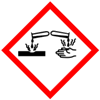 Corrosive |
GHS Label Elements |
Signal Words: Danger
Hazard statements:
H302: Harmful if swallowed.
H315 Causes skin irritation.
H318: Causes serious eye damage.
H410 Very toxic to aquatic life with long lasting effects.
Precautionary statements:
P261: Avoid breathing dust/fume/gas/mist/vapors/spray.
P262: Do not get in eyes, on skin, or on clothing.
P264 Wash skin thoroughly after handling.
P270 Do not eat, drink, or smoke when using this product.
P271: Use only outdoors or in a well-ventilated area.
P280: Wear protective gloves/protective clothing/eye protection/face protection.
P301+P312: IF SWALLOWED: Call a POISON CENTER or doctor/physician if you feel unwell.
P302+352: IF ON SKIN: Wash with soap and water.
P332+313: If skin irritation occurs: Get medical advice/attention.
P304+340: IF INHALED: Remove victim to fresh air and keep at rest in a position comfortable for breathing.
P305+P351+P338: IF IN EYES: Rinse cautiously with water for several minutes. Remove contact lenses, if present and easy to do. Continue rinsing.
P337+P313: If eye irritation persists: Get medical advice/ attention.
3. Composition/Information on Ingredients
Product Name & Other Names: Macrogol Cetostearyl Ether.
CAS No.: 68439-49-6
EINECS EC-No.: 500-212-8
4. First Aid Measures
Always seek medical attention after first aid measures are provided.
Inhalation: If inhaled, remove to fresh air. If not breathing, give artificial respiration. If breathing is difficult, give oxygen. Get medical attention.
Ingestion: Give large amounts of water to drink. Never give anything by mouth to an unconscious person. Get medical attention.
Skin Contact: Immediately flush skin with plenty of water for at least 15 minutes. Remove contaminated clothing and shoes. Get medical attention.
Eye Contact: Check for and remove any contact lenses. Immediately flush eyes, with running water for at least 15 minutes, keeping eyelids open. Cold water may be used. Get medical attention.
5. Fire Fighting Measures
Auto ignition temperature: High heat or direct flame is necessary to cause ignition.
Specific Hazards Arising from the Chemical: Dust can form an explosive mixture with air. Do not allow run-off from firefighting to enter drains or water courses. Fine dust dispersed in air may ignite.
Fire Extinguishing Media: Use water spray, alcohol-resistant foam, dry chemical, or carbon dioxide. Avoid solid stream of water. Water spray may be used to keep fire exposed containers cool. Carbon dioxide and carbon monoxide and fumes will be formed on combustion.
Special Information: In the event of a fire, wear full protective clothing and NIOSH-approved self-contained breathing apparatus with full face piece operated in the pressure demand or other positive pressure mode. At high temperatures under fire conditions, it may produce toxic or irritating fumes.
6. Accidental Release Measures
Personal precautions, protective equipment, and emergency procedures: Avoid breathing dust/fumes/gas/mist/vapors/spray. Use individual protective equipment (waterproof boots, suitable protective clothing, safety glasses, etc.). Restrict unprotected personnel from the area.
Environmental precautions: Do not let the product enter drains, soil, or water sources.
Methods and materials used for containment cleanup procedures and Storage:
Keep away from heat. Keep away from sources of ignition. Stop leaking, without risk. Pick up and dispose of hazardous waste. Keep in suitable, closed containers for disposal. Finish cleaning by spreading water on the contaminated surface and dispose as per law.
7. Handling and Storage
Precautions for safe handling: Apply according to good manufacturing and industrial hygiene practices. Ensure proper ventilation. Wash thoroughly after handling. Do not drink, eat, or smoke while handling. Avoid contact with skin, eyes, and clothing. Minimize dust generation. Avoid breathing dust/fumes/gas/mist/vapors/spray. Keep container tightly closed. Avoid ingestion and inhalation. Use individual protective equipment (waterproof boots, suitable protective clothing, safety glasses, etc.).
Conditions for safe storage, including any incompatibilities: Store in cool, dry, and ventilated area away from heat sources and protected from sunlight in tightly closed original container. Keep air contact to a minimum. Do not leave the material container open. Store protected from heat, sparks and ignition sources and incompatible materials. Avoid contact with skin and eyes. Avoid inhalation of dust/mist/vapor. Do not store with incompatible materials like strong oxidizing agents.
8. Exposure Controls/Personal Protection
Airborne Exposure Limits: Not established. Keep below 5 mg/m3.
Ventilation System: A system of local and/or general exhaust is recommended to keep employee exposures as low as possible. Local exhaust ventilation is preferred because it can control the emissions of the contaminant at its source, preventing dispersion of it into the general work area.
Personal Respirators (NIOSH Approved): Use only under a chemical fume hood. For conditions of use where exposure to the substance is apparent and engineering controls are not feasible, consult an industrial hygienist. For emergencies, or instances where the exposure levels are not known, use a full-face piece positive-pressure, air-supplied respirator.
Skin Protection: Wear impervious protective clothing, including boots, gloves, lab coat, apron, or coveralls, as appropriate, to prevent skin contact.
Eye Protection: Use chemical safety goggles and/or a full-face shield where splashing is possible. Maintain eye wash fountain and quick-drench facilities in work area.
Other Control Measures: Maintain good housekeeping in work area. Handle in accordance with good industrial hygiene and safety practice.
9. Physical and Chemical Properties
Appearance: White or yellowish-white, waxy, unctuous mass, pellets, microbeads or flakes.
Odor: No data found.
Odor threshold: No data found.
pH: No data found.
Relative density: No data found.
Boiling Point: No data found.
Melting Point: 32C to 52C
Flash point: No data found.
Auto-ignition temperature: No data found.
Decomposition temperature: No data found.
Upper/lower flammability or explosive limits: No data found.
Vapor Density (Air=1): No data found.
Vapor Pressure (mm Hg): No data found.
Evaporation Rate (BuAc=1): No data found.
Flammability (solid, gas): No data found.
Partition coefficient: n-octanol/water: No data found.
Solubility: Soluble in ethanol (96 per cent) and in methylene chloride.
Viscosity: No data found.
10. Stability and Reactivity
Stability: Stable under ordinary conditions of use and storage.
Hazardous Decomposition Products: Fumes, Carbon dioxide and carbon monoxide may form when heated to decomposition.
Hazardous Polymerization: Not reported.
Incompatibilities: Strong oxidizing agents.
Conditions to Avoid: Heat, flames, ignition sources and incompatibles. Avoid dust formation, Excess heat. Exposure to light and Exposure to atmosphere.
11. Toxicological Information
Oral rat LD50: 1260 mg/kg.
Mutagenic Effects: No data found.
Teratogenic Effects: No data found.
Developmental Toxicity: No data found.
Carcinogenicity: No component of this product present at levels greater than or equal to 0.1% is identified as probable, possible, or confirmed human carcinogen by IARC, ACGIH, OSHA, NTP.
12. Ecological Information
Very toxic to aquatic life with long lasting effects.
Toxicity to fish: semi-static test LC50 - Danio rerio (zebra fish) - 108 mg/l - 96 h.
Persistence and Degradability: No data found.
Mobility: No data found.
Results of PBT and vPvB assessment: No data found.
13. Disposal Considerations
Whatever cannot be saved for recovery or recycling should be managed in an appropriate and approved waste disposal facility.
14. Transport Information
DOT-USA, Canada TDG & ADR/RID Europe:
UN number: 3077; Transport hazard class(es): 9; Packing group: III
UN proper shipping name: Environmentally hazardous substance, solid, n.o.s. (alcohols, C16-C18, ethoxylated).
IMDG & IATA:
UN number: 3077; Transport hazard class(es): 9; Packing group: III
UN proper shipping name: Environmentally hazardous substance, solid, n.o.s. (alcohols, C16-C18, ethoxylated).
15. Regulatory Information
USA:
SARA 311/312: Acute: and Chronic health hazard.
US California Proposition 65: Not listed.
16. Other Information
Disclaimer:
**************************
Our company provides this MSDS sheet in good faith but makes no representation as to its comprehensiveness or accuracy. This SDS sheet is intended only as a guide to the appropriate precautionary handling of the material by a properly trained person using this product. The above information has been compiled from various sources and has the possibility of discrepancy and being out-dated information. Individuals receiving the information must exercise their independent judgment and do further search in determining its appropriateness for a particular purpose. In no case shall our company be liable to loss or damages by the product user.
**************************

Macrogol Cetostearyl Ether Manufacturers, Suppliers, Exporters, Wholesalers:
King of Chemicals manufacturers

Plot No. 2900/46&47 + 2900/163to167, GIDC, Ankleshwar, Dist. Bharuch, India
India, USA, UAE
TEL: (Office) 91-22-23774610, 91-22-23723564
e-mail: info@kingofchemicals.com
Copyright and Usual Disclaimer is Applicable --- March 31, 2025
If I give you “My Word” Nobody can undo it.
If I sign an “Agreement” my Lawyer will undo it
Our products are for industrial and laboratory use only. The user must test the material before use. We are not dispensing chemists or druggist and do not offer over the counter type (OTC) products for medical use by individuals.
We and our associates manufacture pure chemicals surpassing Monograph Specifications of Analytical Reagent Standards, British & European Pharmacopoeia BP Ph Eur EP Standard, US Pharmacopoeia USP NF Standard, Indian Pharmacopoeia IP Standard, Japan Pharmacopoeia JP Standard, FCC Food Grade Standard. |
|
